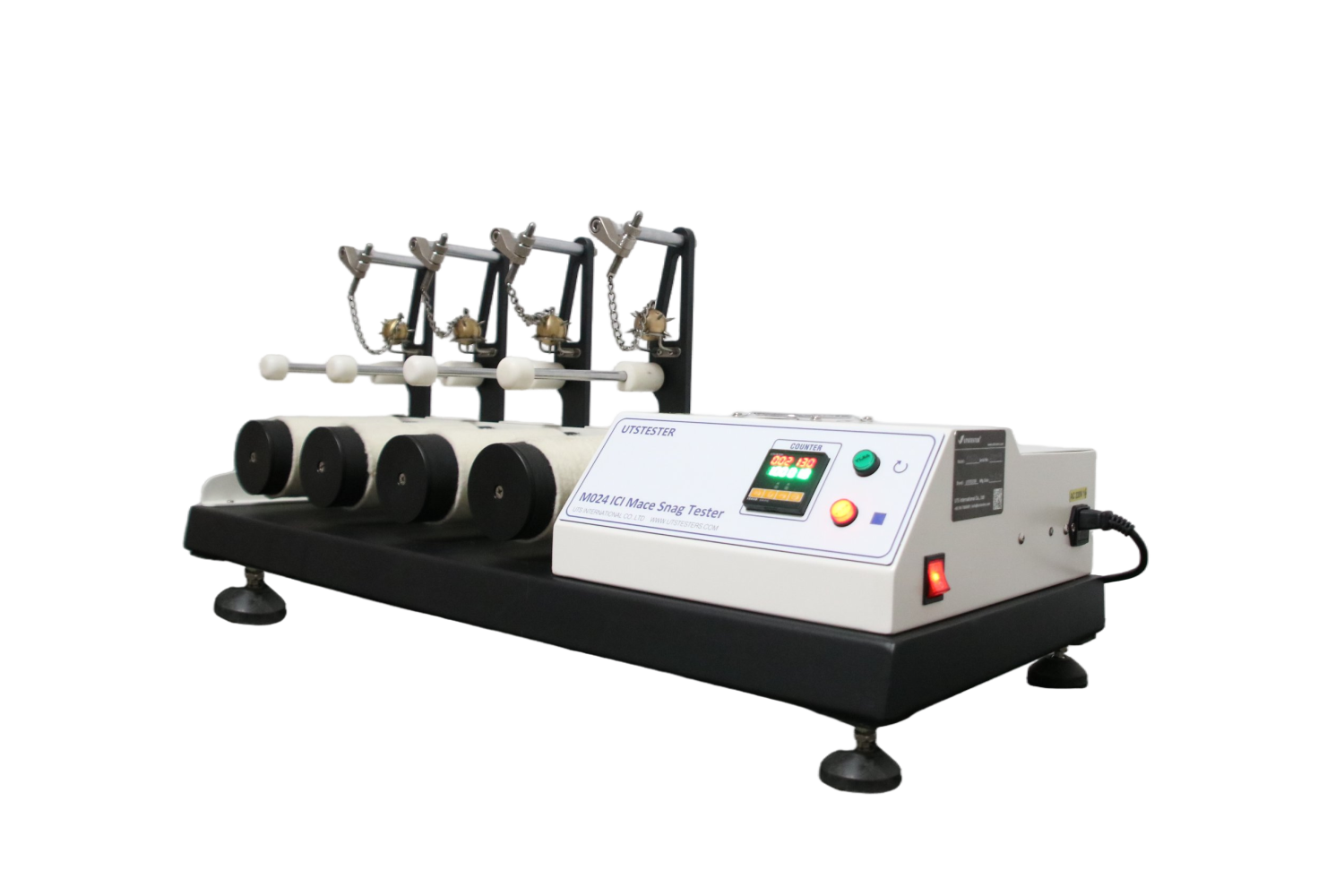 +86 152 6060 5085
+86 152 6060 5085
 +86 152 6060 5085
+86 152 6060 5085
I. Instrument Introduction
ICI Mace Snag Tester is a test device used to evaluate the snagging tendency of fabrics when subjected to sharp objects. The instrument is widely used in the anti-snagging performance test of textiles, knitwear, woven fabrics and other materials, and is suitable for quality control, product development and standard testing.
II. Test Standards
ICI Mace Snag Tester is usually tested according to the following standards:
(1)ASTM D3939 (Standard Test Method for Snagging Resistance of Fabrics (Mace Test Method))
(2)ISO 16547 (Textiles — Determination of fabric propensity to snagging — Mace test)
(3)BS 5811 (British Standard)
III. Preparation before testing
1. Instrument inspection
(1) Make sure the instrument is placed horizontally to avoid vibration interference.
(2) Check whether the rotating arm and test pin (mace) are intact and free of wear or deformation.
(3) Ensure that the inside of the test box is clean and free of residual fibers or impurities.
2. Sample preparation
(1) Sample size: at least 200mm × 200mm (it is recommended to cut into a circle to fit the test box).
(2) Number of samples: usually 3-5 samples are tested to improve data accuracy.
(3) Sample status: should be humidified for at least 24 hours under standard atmospheric conditions (20±2℃, 65±4% RH).
3. Calibration (if necessary)
Use standard calibration fabric to calibrate the instrument to ensure consistency of test results.
Check whether the rotation speed meets the standard (usually 60±2 rpm).
IV. Test steps
1. Install the sample
(1) Fix the sample flatly on the sample clamp in the test box to ensure that there are no wrinkles.
(2) Adjust the sample tension so that it is close to the inner wall of the test box but not overstretched.
2. Set test parameters
(1) Test time: usually 600 revolutions (about 10 minutes), or adjust according to standard requirements.
(2) Rotation speed: 60 rpm (default value).
3. Start the test
(1) Close the test box door and ensure that it is securely locked.
(2) Press the start button and the instrument starts running.
(3) Avoid opening the door or interfering with the instrument operation during the test.
4. End of the test
(1) After the instrument stops automatically, remove the sample.
Inspect the surface of the sample for any snagging and record the number, length and severity of snagging.
V. Result Evaluation
1. Rating Method
Usually, visual rating method is used to judge by comparing with standard sample photos or rating cards:
Grade 1: Severe snagging (many long snagging)
Grade 2: Moderate snagging (obvious snagging)
Grade 3: Slight snagging (a few short snagging)
Grade 4: Almost no snagging (very slight)
Grade 5: No snagging (perfect)
2. Data Recording
(1) Record the snagging level of each sample.
Calculate the average value as the final test result.

Email: hello@utstesters.com
Direct: + 86 152 6060 5085
Tel: +86-596-7686689
Web: www.utstesters.com